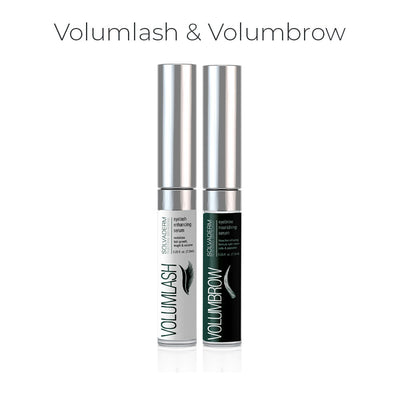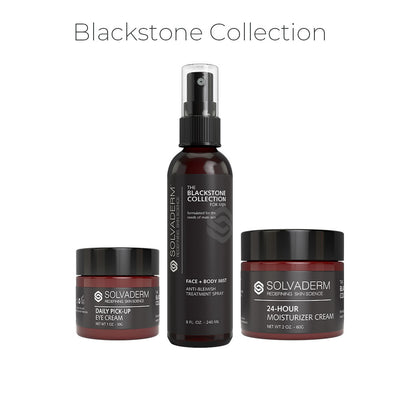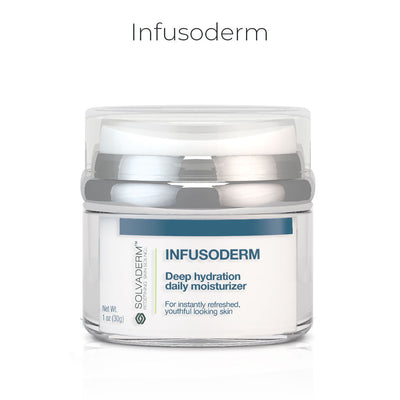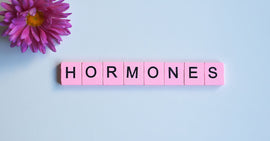When it comes to your complexion, the ideal appearance is a radiant, rejuvenated surface that glows with good health and youthfulness. However, you may find that your skin sometimes appears dull and falls short of the optimal tone and texture. But, what is dull skin?
A dull complexion is flat, dry, patchy, and lacks vibrance. It reflects the light poorly, so it appears colorless or even ashen in some cases. If your skin has lost its luster, you are likely wondering why and what you can do to bring back the shine.
In this article, we’ll tell you everything you need to know about dull skin, its causes, and some effective lifestyle, skincare, and medical solutions which can help bring it back to optimal vitality.
What is Dull Skin?
A dull skin tone refers to a complexion that has an excess build-up of dead skin cells, leading to an uneven texture and a gray, bland appearance. The skin may also be dehydrated, causing dryness which further enhances its dreary appearance.
In addition, there are other signs of dull skin, and examples include:
- rough, bumpy surface
- tired appearance
- lack of brightness
- dryness and flaking
- darkness under the eyes
- colorless, bland tone
- more visible wrinkles and fine lines
Causes of Dull Skin
Ideally the skin should shine with a glow and radiance which indicates health and vibrance, so when it takes on an uninspired, drab sheen, you will likely wonder why. When it comes to dull skin, causes vary and may include negative lifestyle habits, aging, or lack of proper skincare. Let’s look at each individual reason in detail, and then consider what you can do to get rid of dry patches and other signs of a dull complexion.
Cause #1 - Dryness and Dehydration
One of the primary causes of dull skin is dryness and dehydration, which may result from changes in the climate, overexposure to UV rays, lack of proper hydration, or poor skincare habits. Environmental agents like pollution and dust can also zap moisture from your skin.
These agents also clog your pores, and the dryness can lead to excess oil production which adds to this issue and causes dead skin cells to build up on the surface of the skin. Dry skin can also cause the complexion to develop cracks where bacteria and other impurities can enter.
In addition, the dryness redirects blood flow away from your face for a drab appearance. Poor circulation to your skin also prevents the repair of damage and cellular renewal, contributing to the buildup of dead skin cells. This may cause flakiness, and leave you with an unhealthy appearance.
The lack of proper moisture can cause the skin to lose its plumpness and develop signs of age like wrinkles and fine lines. Taking in adequate hydration consistently can do a lot to rehydrate your complexion and give it new life.
Cause #2 - Aging
Aging can contribute to dull skin, meaning as you get older levels of collagen and elastin decrease which leads to a thinner, more vulnerable complexion, and less shedding of dead skin cells. The buildup of cells on the surface can promote a dull, drab appearance, lacking in luster and radiance.
In addition, the loss of key proteins may also cause more lines and wrinkles to develop on the surface of your skin. Over time, the skin also has more difficulty retaining moisture, for a greater likelihood of dryness and loss of vibrance. Sebum production also slows, which makes dryness even more likely.
With age, the renewal of cells on the surface declines naturally, slowing the production of newer, fresher cells to replace the older ones underneath. Naturally, this further contributes to excess dead cells on the surface unless you combat it with a strong, consistent skincare routine using the right high-quality products
Cause #3 - Dead Skin Cells
As we have said, sebum production slows over time, which can lead to drier skin and a buildup of dead skin cells on the surface. Failing to exfoliate is another primary reason for the development of excess cells, as it prevents the surface from reflecting light properly. This can give your skin a dull, drab appearance unless you actively work to remove the excess buildup and rejuvenate your complexion.
Cause #4 - Smoking
If you’re a smoker, your habit could greatly contribute to the dull skin on your face. The nicotine in cigarettes can restrict the blood vessels, leading to impaired blood flow to your face. Lack of proper circulation can make your skin colorless and lacking in radiance and a healthy glow.
In addition, the chemicals you take into your body when you smoke can speed up collagen and elastin loss, leading to thinner, looser, less elastic skin with signs of age like wrinkles and fine lines appearing prematurely. They also slow cell turnover, so there is a greater likelihood that dead skin cells will build up on the surface.
However, it doesn’t end there. Smoking can disrupt your skin’s moisture barrier, causing dehydration and a dry, flaky, dull complexion. Quitting smoking can make a big difference, regenerating collagen levels and moisture within a short period of time - even days.
How to Treat Dull Skin
If you’re concerned about your skin’s dull appearance, you should know that there are a number of potential solutions to the problem, including lifestyle modifications, changes in your skincare routine, and even a number of effective medical, in-office treatments.
The difference between dull vs bright skin is so distinct that implementing some or all of these solutions can enhance your appearance significantly, hopefully giving you a huge boost in confidence.
Step #1 - Moisturize Often (Preferably Daily)
One of the best ways to combat a dry, dull, uninspired complexion is to moisturize often, preferably every morning and evening for best results. Rehydrating your complexion keeps it balanced, prevents dryness, and gets rid of the dullness of the skin, meaning the added hydration leaves it fresh, radiant, and glowing.
It also plumps, helping to smooth signs of age like creases, lines, and wrinkles, and giving it a healthier, more youthful appearance. In addition, moisturizer soothes the complexion, helping to prevent irritation.
If you have dry, dull skin, choose a robust cream moisturizer that includes deeply hydrating ingredients such as Infusoderm. This formula moisturizes, nourishes, and refreshes the complexion, eliminating dryness and leaving you with a bright, glowing, healthy appearance.
It also soothes irritation and destroys damaging free radicals, which can reduce oxidative stress, repair damage, and help reverse aging. Infusoderm plumps the complexion, smoothing wrinkles, fine lines, and creases on the surface for a glowing, youthful look.
Step #2 - Try a Humidifier
Using a humidifier is a highly effective method for restoring lost hydration to your skin, especially if your home environment is dry. In the winter months, people often use heaters which can zap the liquid from the air, and windows rarely get opened. The added dryness can contribute to the development and maintenance of dull, drab skin.
You can purchase a humidifier for every room if you wish, or simply for the areas of the house that you are in most frequently. The added liquid in the air can also help to boost the effectiveness of your daily moisturizer. Besides giving your skin a dewy glow, a humidifier gives the skin more volume to help smooth wrinkles and fine lines.
Step #3 - Exfoliate
If you’ve been skipping this step in your skincare, you should reconsider especially if you have dull, drab skin. Exfoliating gently once or twice a week is a great way to get rid of the excess buildup of dead skin cells on your complexion, leaving a smooth, fresh layer underneath which glows with good health and radiance. However, it’s important not to overdo this process by exfoliating too often or rubbing the skin excessively during treatment. Follow a 3-step process including cleansing, exfoliating, and moisturizing for optimal benefits.
Step #4 - Follow a Skincare Routine
Don't underestimate the importance of following a consistent skincare routine daily in the morning and evening using enriching, high-quality products to keep dull skin at bay. Begin with a cleanser to remove dirt, makeup, dead skin cells, and excess oil from your complexion, and follow up with a toner for a deeper cleanse.
Include a rich, hydrating moisturizer in your routine to prevent dryness which may exacerbate dull skin. At night you may want to opt for a rich night cream. However, once or twice a week you should exfoliate before applying moisturizer, to ensure that dead skin cells clogging your pores and the surface of your complexion are removed.
Do not exfoliate any more frequently than this, as you risk stripping key oils from your complexion, leading to excess sebum production and oily skin.
You may also consider using a product that contains Vitamin C, as it repairs and brightens the complexion. Other optimal ingredients for dull skin include hyaluronic acid, grape extract, morus bombycis root, peppermint, and mallow. During the day, complete your routine with an SPF sunscreen to prevent additional damage from UV rays.
Step #5 - Try In-office Methods
If dull skin is a persistent problem that you can’t solve on your own, or you want to speed up your results, consider making an appointment with a dermatologist for in-office treatment.
There are a number of procedures that can significantly improve dull skin, including some of the following:
Chemical Peel - This method involves applying a solution to remove the outer layer of your skin, getting rid of dead skin cells, and revealing a fresh, healthy layer underneath.
Microdermabrasion - In this procedure, the practitioner uses a device to gently prick the skin, removing dead cells for a fresher appearance. The process also stimulates collagen as the skin heals, for tighter skin and less visible signs of age like fine lines and wrinkles.
Soft Tissue Fillers - This involves injecting a filler into the skin, often in the form of a gel or hyaluronic acid solution, to hydrate, remove dryness, and lessen dullness. It also plumps the complexion to smooth signs of age for a more youthful appearance.
Ablative Lasers - This laser targets the outer layer of your skin, removing the dead skin cells for a fresher, brighter, healthier appearance. It also boosts collagen production as the skin heals from the treatment, for tighter, stronger skin and smoothing of signs of age.
Non-Ablative Lasers - A non-ablative laser works under the skin rather than on the surface, repairing some of the damage which causes dull skin and increasing collagen levels for a reduction in wrinkles and fine lines.
FAQ
Question #1 - How do I know if I have dull skin?
What is dullness? Skin that is dull appears drab, lacks shine and vibrance, and may have rough patches. A dull complexion is often dry from inadequate hydration and has a buildup of excess skin cells on the surface, preventing the healthy blood flow that promotes a radiant complexion.
It has an uneven tone and an unhealthy texture, and it may appear dry and colorless. In addition, dull skin is more likely to develop signs of age like wrinkles and fine lines, as the lack of hydration causes it to lose volume and sag.
Question #2 - Does vitamin C help with dull skin?
Vitamin C is a powerful antioxidant that can help with just about any skin concern, and it's a particularly effective remedy for a dull, drab complexion on a number of levels. This nutrient blocks the production of the pigment melanin in the skin by inhibiting a key enzyme, leading to a lighter, brighter complexion and fading age spots and areas of hyperpigmentation.
Vitamin C destroys harmful free radicals, lowering oxidative stress and repairing damage to the skin. It plays a key role in collagen synthesis, which tightens a sagging complexion, improves elasticity, and smooths signs of age like wrinkles, creases, and fine lines.
Conclusion
Dry, dull, colorless, or ashen skin can have a negative impact on your appearance, causing it to lack a glowing radiance and marring its health on a number of levels. This article has described the primary causes of dull skin, and it has provided you with several suggestions to help restore your complexion to brightness, vibrancy, and youthfulness.
This includes lifestyle changes like hydrating properly and quitting smoking, clinical procedures like chemical peels, and a revamping of your skincare routine to hydrate, repair, and remove dead skin cells to keep your complexion fresh and healthy.
The Solvaderm collection includes a wide range of products that can deeply hydrate your complexion, exfoliate dead skin cells, improve circulation, decrease signs of age, and bring the glow of good health back to your skin. Explore our collection and build the optimal skincare routine for combatting dullness.








